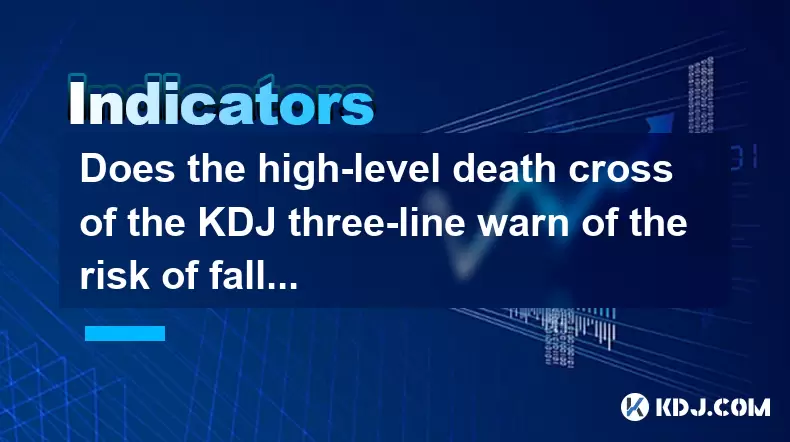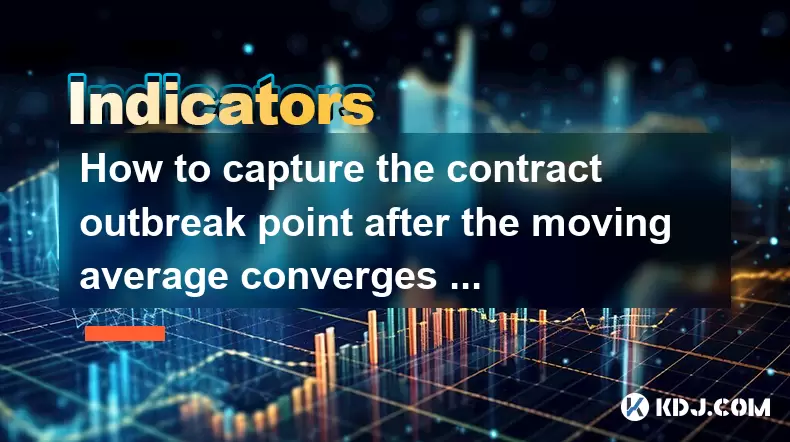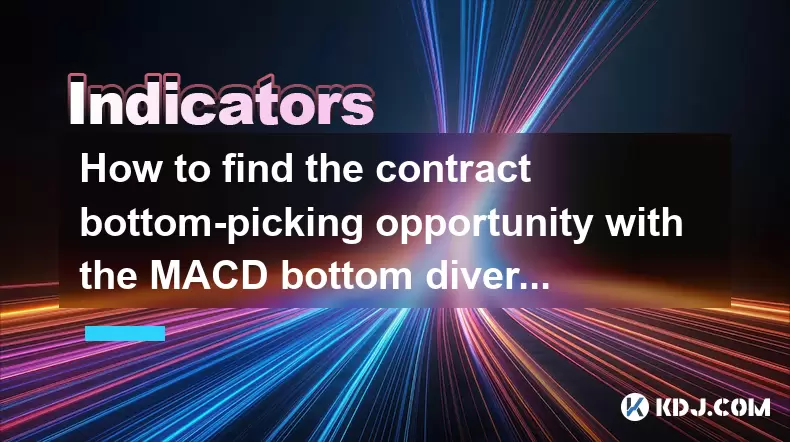-
 Bitcoin
Bitcoin $106,754.6083
1.33% -
 Ethereum
Ethereum $2,625.8249
3.80% -
 Tether USDt
Tether USDt $1.0001
-0.03% -
 XRP
XRP $2.1891
1.67% -
 BNB
BNB $654.5220
0.66% -
 Solana
Solana $156.9428
7.28% -
 USDC
USDC $0.9998
0.00% -
 Dogecoin
Dogecoin $0.1780
1.14% -
 TRON
TRON $0.2706
-0.16% -
 Cardano
Cardano $0.6470
2.77% -
 Hyperliquid
Hyperliquid $44.6467
10.24% -
 Sui
Sui $3.1128
3.86% -
 Bitcoin Cash
Bitcoin Cash $455.7646
3.00% -
 Chainlink
Chainlink $13.6858
4.08% -
 UNUS SED LEO
UNUS SED LEO $9.2682
0.21% -
 Avalanche
Avalanche $19.7433
3.79% -
 Stellar
Stellar $0.2616
1.64% -
 Toncoin
Toncoin $3.0222
2.19% -
 Shiba Inu
Shiba Inu $0.0...01220
1.49% -
 Hedera
Hedera $0.1580
2.75% -
 Litecoin
Litecoin $87.4964
2.29% -
 Polkadot
Polkadot $3.8958
3.05% -
 Ethena USDe
Ethena USDe $1.0000
-0.04% -
 Monero
Monero $317.2263
0.26% -
 Bitget Token
Bitget Token $4.5985
1.68% -
 Dai
Dai $0.9999
0.00% -
 Pepe
Pepe $0.0...01140
2.44% -
 Uniswap
Uniswap $7.6065
5.29% -
 Pi
Pi $0.6042
-2.00% -
 Aave
Aave $289.6343
6.02%
Does the high-level death cross of the KDJ three-line warn of the risk of falling?
A KDJ death cross occurs when the K-line crosses below the D-line in overbought territory, signaling potential bearish momentum and a possible price reversal.
Jun 18, 2025 at 01:14 pm

Understanding the KDJ Indicator and Its Components
The KDJ indicator, also known as the stochastic oscillator, is a momentum-based technical analysis tool widely used in cryptocurrency trading. It consists of three lines: K-line, D-line, and J-line. These lines help traders identify overbought or oversold conditions, potential trend reversals, and momentum shifts in asset prices.
- The K-line reflects the current price relative to the recent high-low range.
- The D-line is a moving average of the K-line, smoothing out fluctuations for clearer signals.
- The J-line represents the divergence between K and D, often used to detect extreme market conditions.
Each line plays a role in determining whether an asset may be entering a bullish or bearish phase. In the context of a high-level death cross, this typically refers to a scenario where the K-line crosses below the D-line at a level above 80, which is considered overbought territory.
This configuration suggests that upward momentum is weakening and may signal a reversal into a downtrend.
What Is a Death Cross in the Context of KDJ?
A death cross in the KDJ indicator occurs when the K-line crosses below the D-line within the overbought zone (typically above 80). This crossover is interpreted by many traders as a bearish signal, indicating that buying pressure is declining and selling pressure may soon dominate.
Unlike the traditional death cross seen in moving average analysis (e.g., 50-day MA crossing below 200-day MA), the KDJ death cross is more sensitive to short-term price changes due to its oscillating nature. Therefore, it can provide early warnings about potential price drops in volatile markets like cryptocurrencies.
It's crucial to understand that while the death cross is a warning sign, it doesn't guarantee a price decline—it must be confirmed with other indicators or chart patterns.
How Does the J-Line Enhance the Signal?
In addition to the K and D lines, the J-line adds another layer of interpretation. When a death cross forms, especially in overbought conditions, the J-line often spikes sharply downward, sometimes dipping below zero.
Here’s what you should look for:
- A rapid drop in the J-line after a death cross confirms the bearish momentum.
- If the J-line enters negative territory quickly, it indicates strong selling pressure.
- Traders might consider shorting or exiting long positions once the J-line confirms the death cross.
Monitoring the J-line helps filter false signals and increases confidence in the bearish outlook generated by the KDJ death cross.
Historical Examples in Cryptocurrency Markets
Looking back at major cryptocurrency corrections, several instances show how the KDJ high-level death cross preceded significant price declines. For example:
- During the Bitcoin sell-off in May 2021, the KDJ formed a clear death cross above 80 on the daily chart, followed by a multi-week correction.
- Ethereum also exhibited similar patterns around the same period, reinforcing the validity of this signal in crypto assets.
These examples highlight how the KDJ indicator can serve as a useful tool in identifying turning points, especially when combined with volume and support/resistance levels.
However, not every death cross leads to a steep decline—some result in sideways consolidation or brief pullbacks.
Combining KDJ with Other Technical Tools for Confirmation
Relying solely on the KDJ death cross can lead to premature decisions. To enhance accuracy, traders should incorporate additional tools:
- Moving Averages: Check if the price is below key moving averages (like 50 or 200 EMA) to confirm a downtrend.
- RSI (Relative Strength Index): If RSI starts to diverge or falls below 50 after the death cross, it strengthens the bearish case.
- Volume Analysis: A spike in volume during or after the cross often supports the likelihood of a sustained downturn.
By combining these elements, traders can better assess whether the KDJ death cross is a genuine warning or a temporary fluctuation.
Using multiple confirmation methods reduces the risk of acting on false signals and improves decision-making in volatile crypto markets.
Frequently Asked Questions
Q: Can the KDJ death cross occur in oversold conditions?
A: While the death cross is typically associated with overbought zones, a similar bearish signal can appear in oversold areas, though it’s less reliable. In such cases, it may indicate continued weakness rather than a reversal.
Q: How reliable is the KDJ indicator compared to MACD or RSI?
A: The KDJ is more sensitive to price changes, making it effective for short-term trades. However, RSI and MACD offer smoother readings and are often preferred for longer-term trend validation.
Q: Should I always exit my position when a KDJ death cross appears?
A: Not necessarily. Consider the broader market context, including trendlines, support/resistance, and overall sentiment. Exiting partially or tightening stop-loss orders may be prudent strategies.
Q: What timeframes work best with the KDJ death cross in crypto trading?
A: Shorter timeframes like 1-hour or 4-hour charts are ideal for spotting early signs, but daily charts offer stronger, more reliable signals for swing traders.
Disclaimer:info@kdj.com
The information provided is not trading advice. kdj.com does not assume any responsibility for any investments made based on the information provided in this article. Cryptocurrencies are highly volatile and it is highly recommended that you invest with caution after thorough research!
If you believe that the content used on this website infringes your copyright, please contact us immediately (info@kdj.com) and we will delete it promptly.
- Cryptocurrency Regulation in the Democratic Republic of Congo: A Balancing Act
- 2025-06-19 17:05:12
- Circle, Stablecoin, and Rally: A New York Minute on Crypto's Latest Boom
- 2025-06-19 16:25:13
- Gold Smuggling, Indictment, and Lawyers: A New York Minute
- 2025-06-19 16:25:13
- Neo Pepe Coin: The Next Big Meme Coin Presale?
- 2025-06-19 16:45:12
- Cardano (ADA) Price Drop: Dip or Something More?
- 2025-06-19 17:05:12
- Blocksense: Powering Permissionless and Verifiable Infrastructure
- 2025-06-19 16:45:12
Related knowledge

How does the long lower shadow of the K line indicate the formation of the bottom of the contract?
Jun 19,2025 at 05:00am
Understanding the Long Lower Shadow in K-Line AnalysisIn cryptocurrency trading, K-line analysis plays a pivotal role in determining market sentiment and potential price reversals. A long lower shadow, also known as a long wick, is one of the most telling candlestick patterns that traders look for when assessing whether a bottom might be forming in a co...

How to capture the contract outbreak point after the moving average converges and diverges?
Jun 19,2025 at 02:07pm
Understanding Moving Average Convergence and Divergence in Crypto TradingIn cryptocurrency trading, moving averages are among the most widely used technical indicators. The concept of convergence and divergence refers to how different moving averages align or separate over time. When short-term and long-term moving averages come together (converge), it ...

How to find the contract bottom-picking opportunity with the MACD bottom divergence?
Jun 19,2025 at 02:28pm
Understanding MACD Bottom Divergence in Cryptocurrency TradingMACD (Moving Average Convergence Divergence) is a widely used technical analysis tool that helps traders identify potential reversals in price trends. Bottom divergence, specifically, occurs when the price of an asset makes a new low, but the MACD indicator does not confirm this by making a c...

How to use the DEMARK indicator to predict the high and low points of the contract?
Jun 19,2025 at 04:21am
What Is the DEMARK Indicator?The DEMARK indicator is a technical analysis tool developed by Tom DeMark, aimed at identifying price exhaustion points in financial markets. It helps traders anticipate potential reversal zones, especially in volatile environments such as cryptocurrency contracts. The indicator works by detecting specific patterns and seque...

Why does the contract sometimes not fall after the moving average crosses?
Jun 18,2025 at 08:50pm
Understanding Moving Averages in Cryptocurrency TradingIn the realm of cryptocurrency trading, moving averages are among the most widely used technical indicators. They help traders identify potential trends by smoothing out price data over a specified period. The two primary types are the Simple Moving Average (SMA) and the Exponential Moving Average (...

How to predict the acceleration of contract market by the change of moving average slope?
Jun 18,2025 at 05:43pm
Understanding the Moving Average in Cryptocurrency TradingIn cryptocurrency trading, moving average (MA) is a fundamental technical indicator used to analyze price trends. It smooths out price data over a specific period, helping traders identify potential trend directions and momentum shifts. The slope of a moving average line reflects how quickly pric...

How does the long lower shadow of the K line indicate the formation of the bottom of the contract?
Jun 19,2025 at 05:00am
Understanding the Long Lower Shadow in K-Line AnalysisIn cryptocurrency trading, K-line analysis plays a pivotal role in determining market sentiment and potential price reversals. A long lower shadow, also known as a long wick, is one of the most telling candlestick patterns that traders look for when assessing whether a bottom might be forming in a co...

How to capture the contract outbreak point after the moving average converges and diverges?
Jun 19,2025 at 02:07pm
Understanding Moving Average Convergence and Divergence in Crypto TradingIn cryptocurrency trading, moving averages are among the most widely used technical indicators. The concept of convergence and divergence refers to how different moving averages align or separate over time. When short-term and long-term moving averages come together (converge), it ...

How to find the contract bottom-picking opportunity with the MACD bottom divergence?
Jun 19,2025 at 02:28pm
Understanding MACD Bottom Divergence in Cryptocurrency TradingMACD (Moving Average Convergence Divergence) is a widely used technical analysis tool that helps traders identify potential reversals in price trends. Bottom divergence, specifically, occurs when the price of an asset makes a new low, but the MACD indicator does not confirm this by making a c...

How to use the DEMARK indicator to predict the high and low points of the contract?
Jun 19,2025 at 04:21am
What Is the DEMARK Indicator?The DEMARK indicator is a technical analysis tool developed by Tom DeMark, aimed at identifying price exhaustion points in financial markets. It helps traders anticipate potential reversal zones, especially in volatile environments such as cryptocurrency contracts. The indicator works by detecting specific patterns and seque...

Why does the contract sometimes not fall after the moving average crosses?
Jun 18,2025 at 08:50pm
Understanding Moving Averages in Cryptocurrency TradingIn the realm of cryptocurrency trading, moving averages are among the most widely used technical indicators. They help traders identify potential trends by smoothing out price data over a specified period. The two primary types are the Simple Moving Average (SMA) and the Exponential Moving Average (...

How to predict the acceleration of contract market by the change of moving average slope?
Jun 18,2025 at 05:43pm
Understanding the Moving Average in Cryptocurrency TradingIn cryptocurrency trading, moving average (MA) is a fundamental technical indicator used to analyze price trends. It smooths out price data over a specific period, helping traders identify potential trend directions and momentum shifts. The slope of a moving average line reflects how quickly pric...
See all articles

























































































